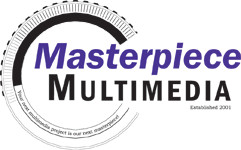The differences in High Definition and Standard Definition video as related to film transfer
When our company transfers 8mm and 16mm film, the option for transfer is High Definition (HD) and Standard Definition (SD). Often times, this simple option leaves customers with a blank stare on their face. What’s the difference? While people tend to easily understand that HD is a higher resolution, they tend to think that it shouldn’t matter because the film is old.
Believe it or not, 8mm & 16mm film have a higher resolution then SD video. Film has millions of silver particles that create resolution of the image as compared to video lines of resolution (or dots/pixels per square inch). Film has been a higher resolution then the video world for a long time. Yet the video world is definitely catching up fast. However, resolution of the film is not the only important factor.
When capturing the film, our machines capture at 1080p. This means there are 1080 lines of resolution. At high megapixels, this is very high resolution. High enough to capture the film in great quality. When a customer requests HD files, we are able to maintain this resolution from start to finish. HD files are rendered to either raw images to be assembled by the editor programs or as .MOV files with MJPEG codec with no compression. Output to video is at 1080p onto blu-ray. Blu-ray will work seamless with HD TVs and maintain the 1080p resolution. SD files are created from the HD capture if that is what the customer wants, so the capture is still as high as we can get it.
The most evident reason to stay HD is the use of larger TVs. Anything in SD will stretch if the TV is larger then 20-24”. However, HD on larger TVs will maintain good video without pixelization (seeing distortion or video squares) on larger TVs. If you get SD files, the highest resolutions are not going to handle being displayed on a 42” or larger TV without significant pixelization.
The second best reason to stay in HD is the dimensions of the video. HD is natively widescreen. When capturing the film, which is also wider then normal SD dimensions, the widescreen output of HD keeps more of the image. One of the challenges of film transfer for the first 10 years we did transfers in SD was having to make a square video image out of a rectangle film image. Parts of the film were lost.
While SD is the most comfortable for many of our customers, it may be worth thinking about HD. Blu-ray players are significantly less expensive then they were 5 or 10 years ago. HD files are more easily manageable now as computer speeds have increased as well as hard drive space. Strong file codecs are also more capable to play back HD files on computers and smart TVs.
Overall, the best choice is HD, however, the SD DVDs that are created are certainly a good quality and are above and beyond what used to get transferred to VHS. The non-flicker frame by frame capture is far better then the projection methods used many years ago.
